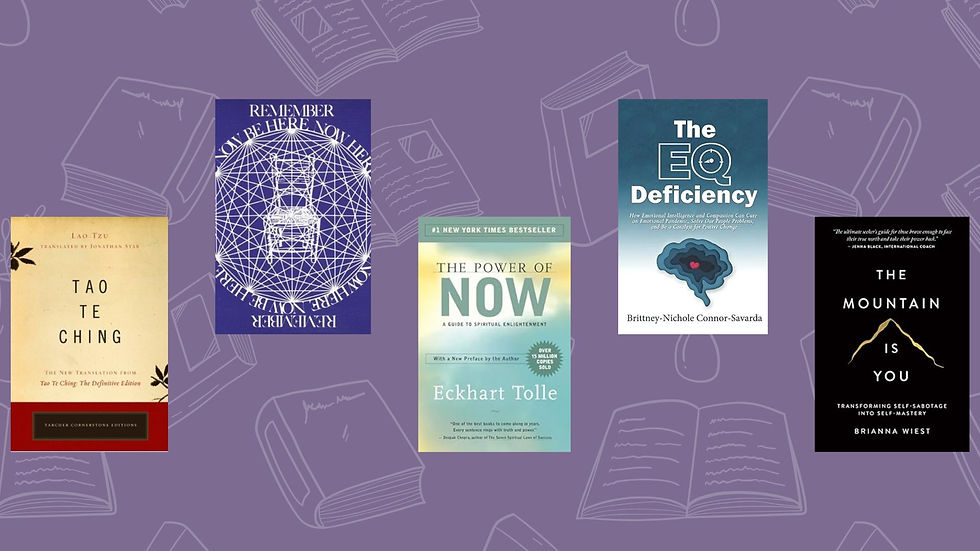The Silent Cost of Pride: How Our Need to Be Right Undermines Connection and Growth
- Brittney-Nichole Connor-Savarda
- Jun 1
- 3 min read

Pride—that feeling of satisfaction in our accomplishments or status—seems harmless and even beneficial on the surface. Yet beneath its confident exterior lies a complex force that can silently erode our connections, limit our potential, and create unnecessary barriers between ourselves and others.
The Protective Illusion
Pride often serves as protective armor, shielding us from vulnerability and the discomfort of uncertainty. When we examine it closely, many expressions of pride are actually defensive responses to underlying insecurities. Understanding this relationship between pride and fear creates opportunities for greater self-awareness and authentic confidence.
Pride's Impact on Learning and Growth
One of the most significant costs of pride is its effect on our capacity to learn. When we're invested in being right or appearing knowledgeable, we close ourselves off from new perspectives and feedback. Organizations and individuals who prioritize "looking good" over genuine curiosity create environments where innovation stagnates and adaptation becomes impossible.
Recognizing the Signs: Pride's Silent Language
Pride reveals itself through subtle patterns in our thoughts, speech, and behaviors—often outside our conscious awareness. Recognizing these indicators is the first step toward transformation:
In Our Thoughts:
The immediate defensive reaction of "I already know this" when presented with information
Mentally dismissing others' perspectives before fully hearing them
Frequent comparisons where we position ourselves favorably against others
Difficulty acknowledging mistakes, even privately to ourselves
Interpreting constructive feedback as personal criticism
Feeling secretly pleased when others fail, especially in areas where we excel
Assuming we understand others' motivations without asking
In Our Speech:
Frequent use of "I" statements and bringing conversations back to our experiences
Making statements rather than asking questions in new situations
Difficulty saying "I don't know" or "I was wrong"
Offering unsolicited advice under the guise of helping
Speaking over others or finishing their sentences
Using phrases like "Actually..." to correct others on minor points
Redirecting praise toward ourselves when others are recognized
Subtle put-downs disguised as humor or "just being honest"
Qualifying others' successes ("They were just lucky" or "They had advantages")
In Our Behaviors:
Reluctance to ask for help, even when struggling
Avoiding situations where we might not excel immediately
Difficulty celebrating others' achievements wholeheartedly
Needing to establish dominance or expertise in group settings
Investing significant energy in managing others' perceptions
Creating explanations for failures that protect our self-image
Selective listening that filters for information that confirms our existing views
The Connection Barrier
In relationships, pride manifests as the invisible wall between authentic connection and self-protection. Research shows that relationships flourish through mutual vulnerability and responsiveness—qualities that pride actively resists. The article explores how letting go of being right creates space for understanding and deeper bonds in personal and professional relationships.
Cultural Dimensions of Pride
Different cultures view and express pride in varying ways. Some societies celebrate collective accomplishments over individual ones, while others emphasize personal achievement. These cultural frameworks deeply influence how we perceive ourselves in relation to others and shape our sense of identity and belonging.
The Leadership Paradox
Effective leadership requires confidence balanced with humility. The most impactful leaders maintain conviction while remaining genuinely open to being wrong. This section examines how leaders who embrace "not knowing" create psychologically safe environments where innovation and honest communication thrive.
From Pride to Dignity: A Transformative Path
The distinction between pride and dignity offers a vision for maintaining self-worth without the defensive posturing that undermines connection. This alternative approach honors accomplishments while remaining open, curious, and connected to our shared humanity.
The shift from pride to dignity begins with awareness—recognizing when we're defending our self-image rather than engaging authentically. When we catch ourselves needing to be right, comparing ourselves to others, or feeling threatened by criticism, we can pause and ask: "What would it look like to respond from dignity instead?" This means acknowledging our achievements without diminishing others, accepting feedback without defensiveness, and celebrating success while remaining grounded in our fundamental worth as human beings. Dignity allows us to say "I made a mistake" without feeling diminished, or "I don't know" without feeling threatened.
This transformation requires practice and patience with ourselves. Rather than seeing vulnerability as weakness, dignity recognizes it as strength—the courage to be genuinely ourselves without armor. When we operate from dignity, we create space for others to do the same, fostering deeper connections and more meaningful relationships. By choosing dignity over pride, we honor both our accomplishments and our humanity, creating a foundation for authentic growth and lasting fulfillment.



Comments